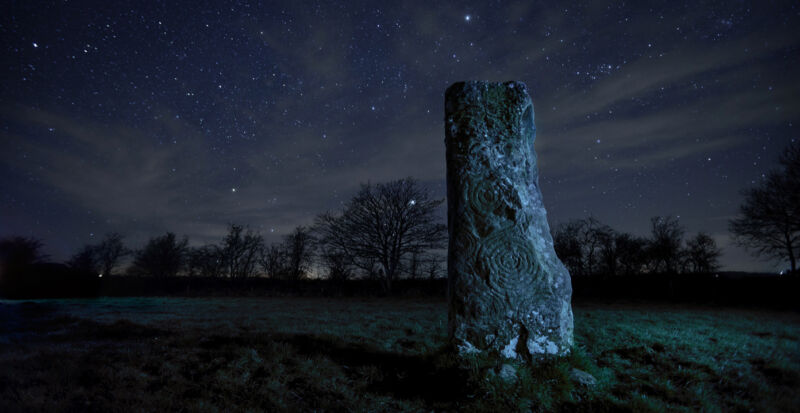Incestuous kings may have built Ireland’s Newgrange passage tomb
Ars Technica » Scientific Method 2020-06-19

Enlarge (credit: Ken Williams, shadowsandstone.com)
A man buried in the inner chamber of Newgrange passage tomb was the product of a union between siblings, according to ancient DNA analysis. He was also more distantly related to people buried at passage tombs up to 150km away, suggesting that a network of related rulers controlled Ireland in the centuries after populations of Neolithic farmers first reached the island from mainland Europe. The find gives us new insight into the last phase of the Stone Age and the beginning of agriculture and settled village life in the area.
Some rumors never die
In the 11th century CE, someone in County Meath, Ireland, finally wrote out a salacious folktale that had been passed down for about 4,000 years. According to the story, an ancient king, who hailed from a tribe of gods, had slept with his sister on the winter solstice as part of a magic ritual to restart the Sun’s daily cycle and save the world from endless night. The couple supposedly did the deed in one of the county’s huge burial mounds, which the locals named Fertae Chuile, or the Hill of Sin.
Today, we know that hill as the Dowth passage tomb, a construction in which buried sections are reached through an entry marked by large stones. Dowth is a close neighbor of the more famous Newgrange passage tomb. And every winter solstice, the sun shines through the stone passage at Newgrange and lights up the innermost burial chamber. And nearly a thousand years after the local legend was first written down, ancient DNA suggests that at least part of the story—the most troubling part, naturally—was actually true.
